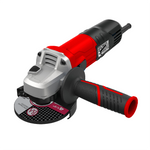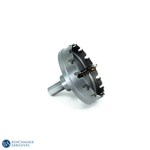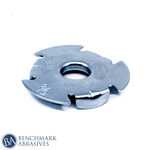
Different Types Of Drill Bit Shanks

The drill bits shank is the part of a drill that fastens to the chuck of a revolving mandrel. The part that does not drill or grind is the male end. Drill bit shanks vary according to the types of drill bits. The primary feature is the shank's form, notwithstanding some functional variations.
Types Of Drill Bit Shanks
1. Brace Shank
An angular dispensation tapers a point into a chuck to form a brace shank, which is a multi-sided shank. Before modern machining techniques made it possible, brace shanks were more frequent because they were easier to create than more intricate and robust shank shapes and sizes. Brace shank torque tolerances are reasonable, although stripping is possible, especially without using a specific chuck.
2. Straight Shank
Straight drill bit shanks are similar to brace shanks, except that their tips are not tapered. As a backup, the cylindrical tip slides into the chuck flush. While some straight shanks have parallel sides, others have slanted sides. Round shanks can drill through complex materials more easily than straight shanks because of their low torque transfer.
Certain drill bits have straight shanks that are smaller in diameter than the bit itself to fit a variety of chuck sizes. Straight shanks don't require special chucks, so you can use them broadly.
Read More: HSS vs Cobalt vs Carbide Drill Bits
3. Hex Shank
The shank's hexagonal form, which makes it resemble a screwdriver bit, inspired the term "hex shank." Because of their shape, hex shanks can be utilized in screwdriver bit chucks as well as specific drill mandrel chucks.
The bit can operate with materials that have high resistance, such as solid metals or geological formations. This is because, in contrast to brace or straight shanks, the shank's inclined curvature enables it to manage larger torque transmissions. The tilt, however, may also cause decentering, which lowers drilling precision.
4. Triangle Shank
The triangle drill bit shank has three angles instead of the hex's six, even though it is inclined similarly. It shares many of the same benefits as the hex, including precise centering and high torque capacity. Only as many drill chucks as the hex can fit it.
5. SDS Shank
These shanks are uniquely constructed with a spring load installation feature that permits a worker to insert the shank into a chuck manually. In German, SDS means "Steck-Dreh-Sitz" or "Insert-Twist-Stay," while in English, it stands for "Special Direct System." When drilling, the spring gives way under stress, enabling the drill to execute masonry or hammering operations.
The SDS is a relatively new drill shank, having only been manufactured for the first time in 1975. It is also more challenging to make than most other shanks. Additionally, the SDS forgoes adaptability in favor of specialized capabilities and uses a dedicated chuck.
Read More: Best Drill Bits For Metal and Woodworking
6. Taper Shanks
One end of the cylindrical section that makes up the shaft flattens out. Morse taper shanks are restricted to chucks by the taper drill bit shank. To guarantee correct operation, staff members need to be informed about Morse taper bits. Failure to follow protocols may result in variations in torque transmission.
7. Square Shank
Square shank drill bits are square-shaped shanks primarily used in specialized or older drilling tools. They allow a secure fit within suitable chucks, preventing movement or slippage during the drilling process. When compared to other drill shanks, square shank bits are less popular but are still used in specific applications where a dependable and stable connection is required.
8. Threaded Shank
Threaded shank drill bits have an exterior thread that enables them to screw straight into specialized equipment or adapters. Threaded shank bits offer a secure and adaptable connection. They are popularly used in applications when precise placement is required or when limited space restricts the use of conventional chucks.
How To Choose The Right Drill Bit Shank
Choosing the right drill bit shank is based on the following factors:
-
Type of Drill: The type of drill to be used in the process is crucial in deciding the drill bit shank. For instance, if you are using hand drills, drill presses, and electric drills with keyless or keyed options, straight shank drill bits are perfectly suitable. If you are using cordless drills or impact drivers, they go perfectly with hex shank drill bits.
-
Drilling Material: The type of material you are drilling also plays a significant role in selecting the right drill bit shank. Different materials require a specific kind of force and torque. For example, to withstand high pressure and heat, you need more robust shanks like Morse taper or SDS. They can quickly drill through hard materials like stainless steel or steel. Softer materials like wood and plastic require straight or hex drill shanks to drill perfectly.
-
Desired level of accuracy: The desired level of accuracy or precision will also affect the decision to select the right drill bit shank. We primarily use shanks that offer stable and secure connections, like the Morse Taper shank, during the drilling process, as these applications require more precision. For less demanding projects, more flexible shank bits are utilized, like hex or straight, as they don't need that much precision, which is necessary for precision tasks.
You can choose the right drill bit shank type with the help of this post.



































































